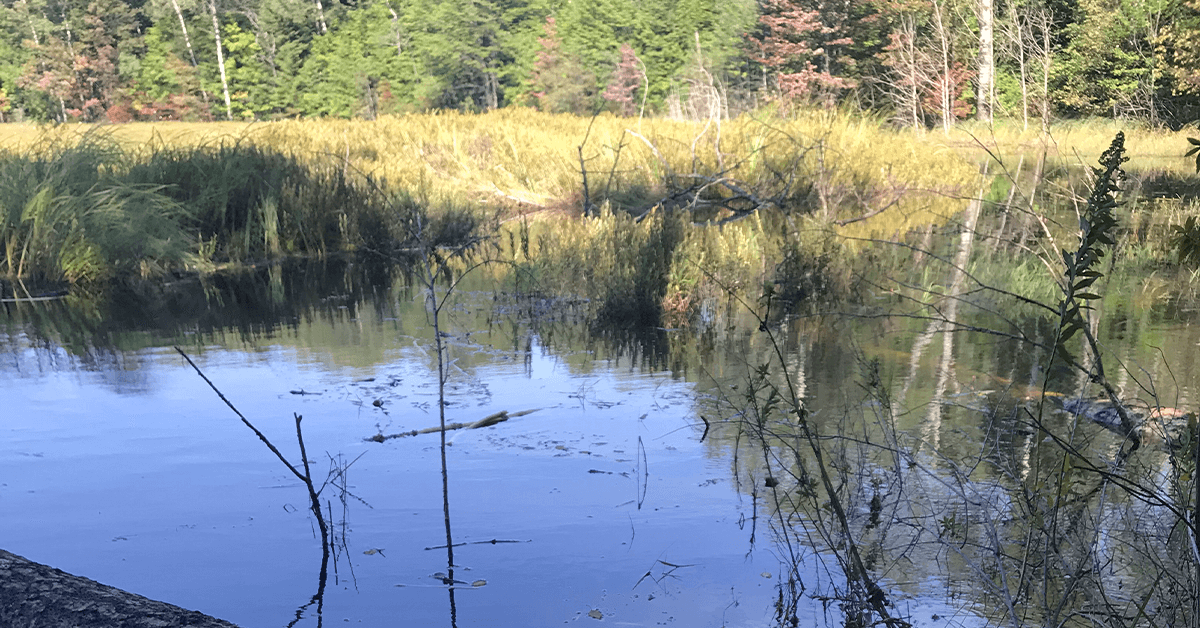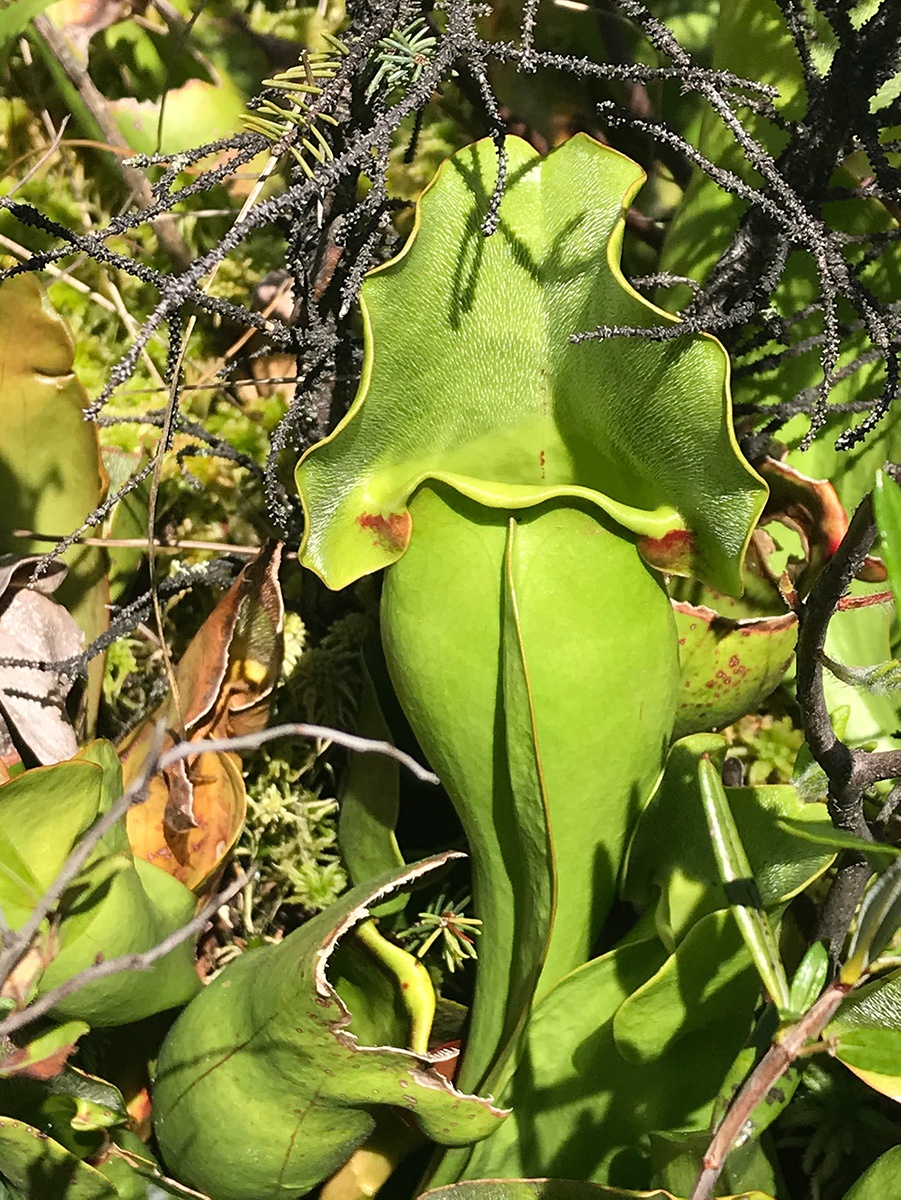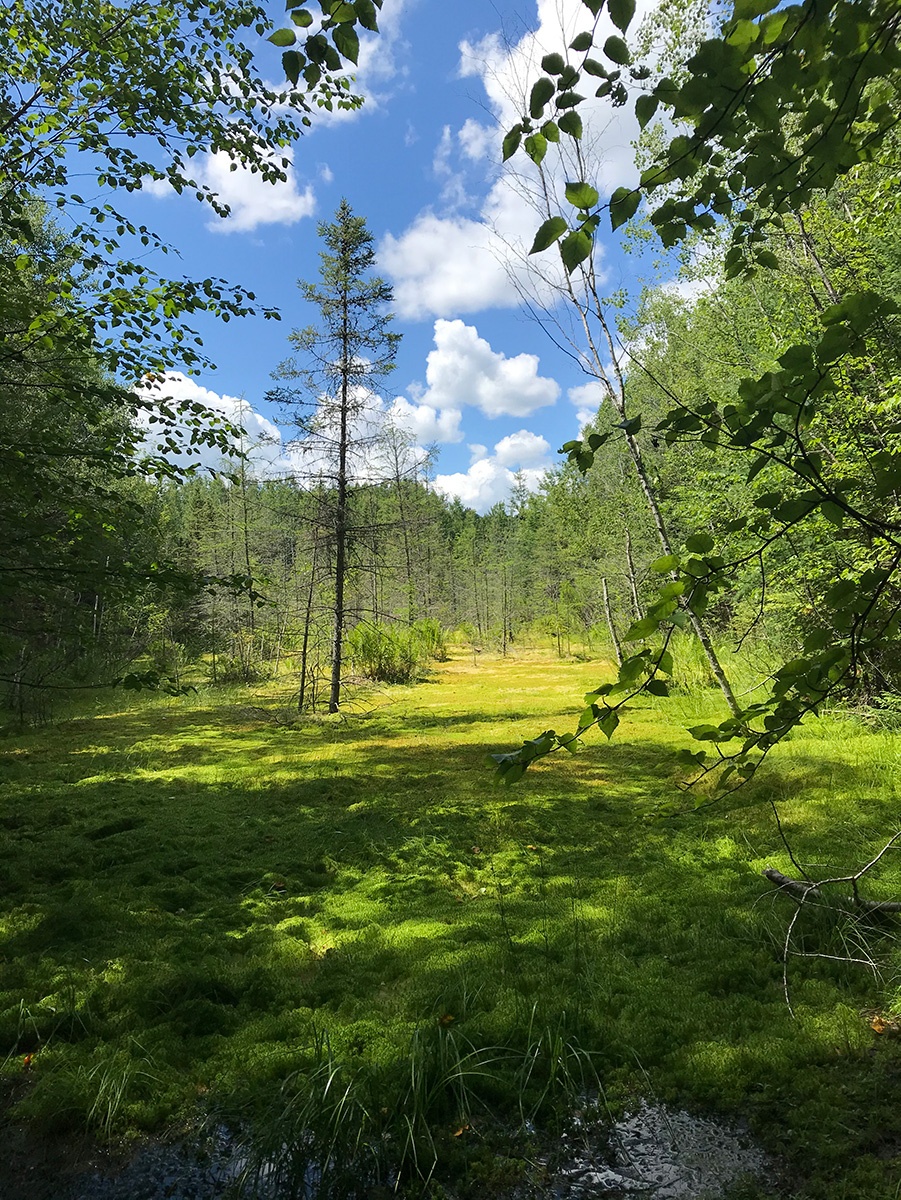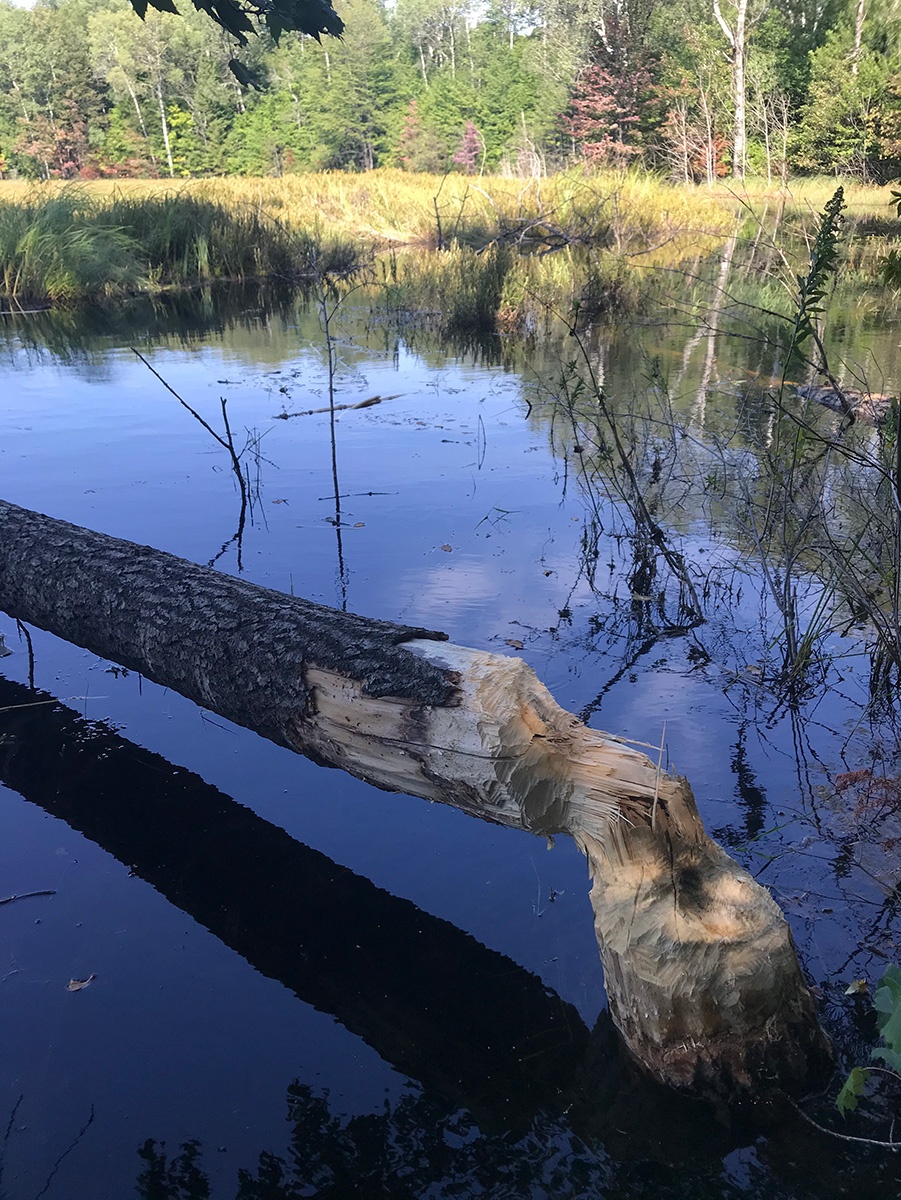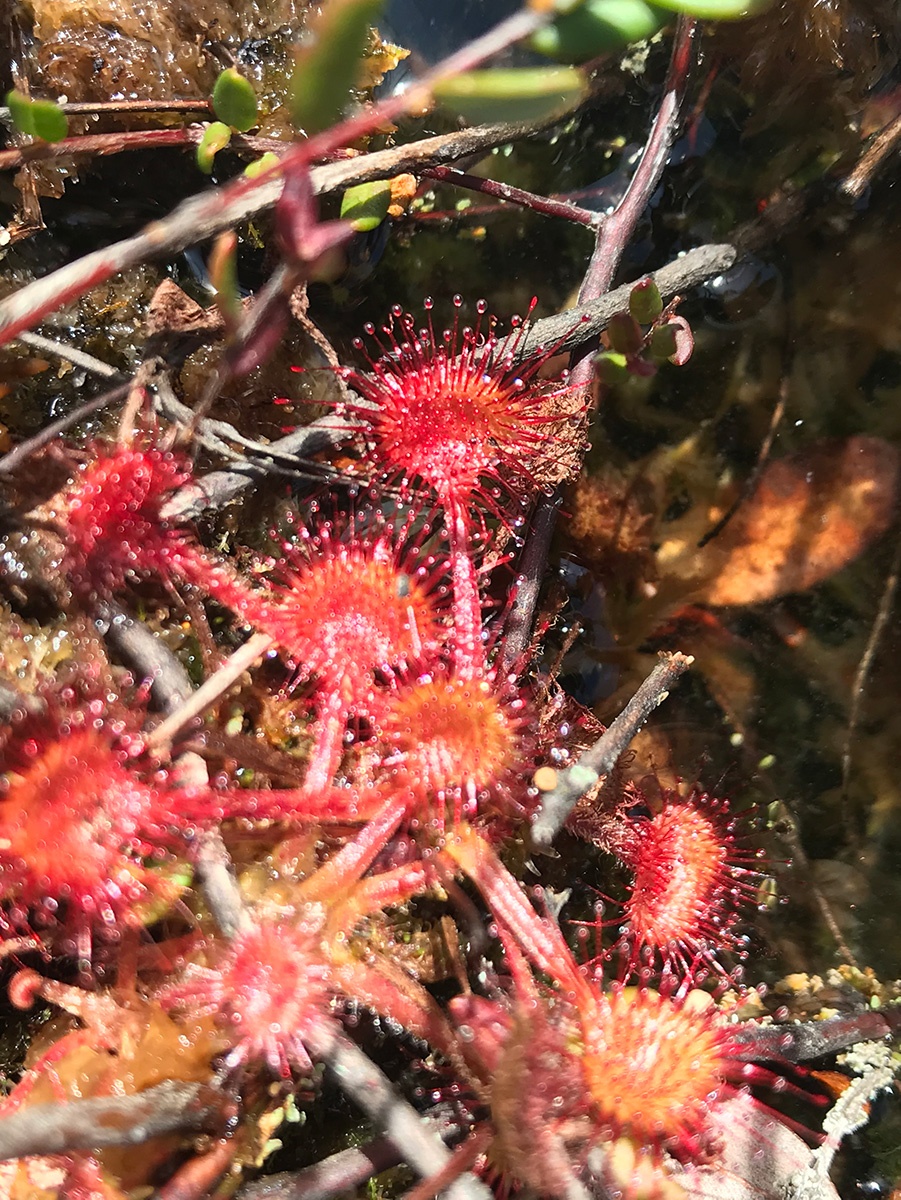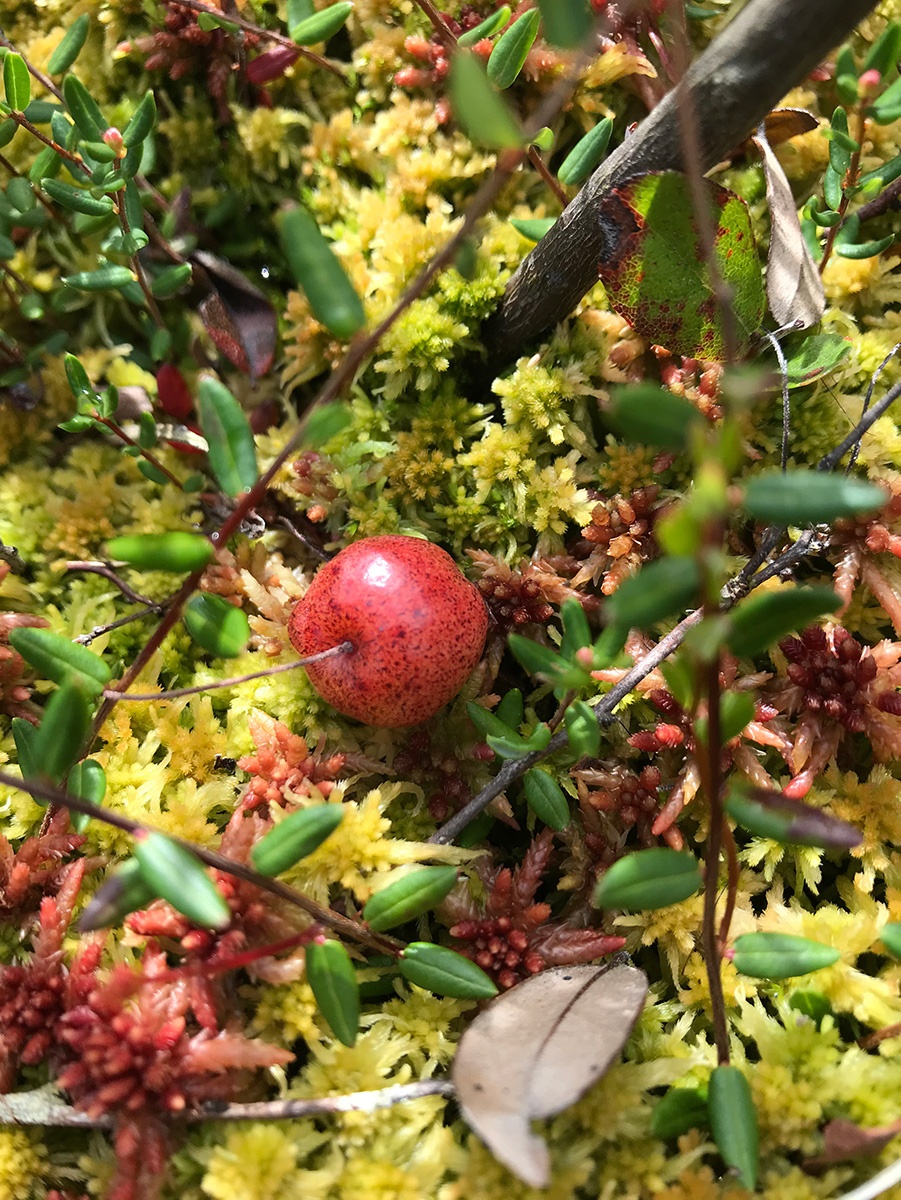You may recall memories from your childhood of walking on a carpet of sphagnum moss, the ground beneath you waving back and forth as you walk as if balancing on a waterbed. What you may not have known at the time is that you were walking on a bog. Bogs are wetlands that have a heavy layer of sphagnum moss carpeting the ground. This thick moss can often restrict the bog from access to nutrient-rich groundwater.
Because of the lack of flowing water and nutrient input, bogs differ from other wetlands around our area. They have low nutrient levels, limited available oxygen, and high acidity. These variables may sound scary from an ecological standpoint. In reality, this environment provides habitat for some really fascinating plant and wildlife species that are adapted to thrive in these harsh conditions.
The low levels of oxygen in these bog systems combined with cold temperatures makes it difficult for fungi and bacteria to break down dead plants. This subsequent buildup of plant matter assists in the accumulation of multiple years of peat moss, often forming rolling hummocks and hollow waterlogged depressions throughout the wetland.
This moss can absorb 20 times its dry weight in water, which helps soak up water during heavy rains and retain moisture to be used by plants and wildlife throughout the drier summer months. This characteristic is also what contributes to the “waterbed” feeling while walking on it.
The plants you are likely to encounter in bogs are rarely seen anywhere else. These plants often have adaptations that allow them to survive in a stressful environment, such as evergreen leaves that are often waxy or hairy with downward-turned leaf edges that allow the plants to retain moisture and photosynthesize longer than other species. Some species grow deep rhizomes that extend 12 inches or more below ground toward the water table which allows the plant to spread and stabilizes the sphagnum mat for inhabitance by other species.
Another adaptation some unique plants exhibit is the ability to catch and digest insects to assist with nutrient intake. In northern Wisconsin, these carnivorous plants may include pitcher plants, sundews, and bladderworts that can lure, capture, and digest insects to obtain the nutrients lacking in their environment. Other plants often seen in bogs include leatherleaf, labrador tea, creeping snowberry, small-leaved cranberry, velvet-leaved blueberry, bog rosemary, and stunted tamaracks and black spruces amongst various species of sedges and rushes.
Bogs are also utilized for habitat and food by numerous wildlife species. The dense characteristics of leatherleaf and other woody shrubs provide cover for nesting mallards and ruffed grouse while being browsed by snowshoe hares, white-tailed deer, and even moose in northern areas.
Turtles, amphibians, birds, muskrats and beavers are other animals that may utilize bogs at some point throughout their life cycles. Due to their lack of flowing water and low oxygen levels, you often don’t find fish in bogs, which allows amphibians to breed successfully in these habitats.
While all of this information is fascinating, the most mysterious and intriguing aspect of all is the preservation ability of bogs. The combination of low oxygen levels, cold temperatures, high acidity, and anti-microbial properties of peat moss not only make it difficult for bacteria to decompose plant matter, but it also creates the ideal environment for preservation of anything that happens to perish within bogs.
Around the world, corpses of animals and people (the oldest from nearly 4,000 years ago) have been found extraordinarily well preserved, often with discernible facial features, fingerprints, hair or fur, and even stomach contents. Spooky! Well don’t let the potential for unknowingly walking above mummified corpses deter you from enjoying bogs in the summer. They are teeming with life and beauty and provide the perfect allure to keep you coming back for more!

